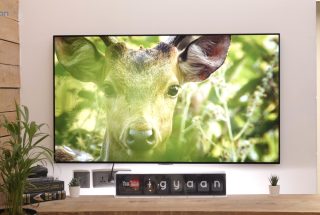Is The Future Of Charging Wireless?

Apple introduced wireless charging with the iPhone models in the year 2017 which include the iPhone 8, iPhone 8 Plus and the iPhone X. While the technology was available for a long time in smartphones, its embracement by Apple made it mainstream. Smartphone OEMs followed Apple and started introducing wireless charging in their devices. The market of wireless chargers has also grown exponentially over the past two years. But, the technology is still imperfect and slow in its current state. So, what could be the next big thing in wireless charging and will we ever see a future without wires?
Introduction and History

Wireless charging is a feature that allows compatible electronic devices to recharge via electromagnetic induction. This allows the transfer of power without the hassles of cables and wires. The feature has grown to become immensely popular in smartphones lately. It was first introduced with the Nokia Lumia 820 and 920 back in September 2012. Soon after that, OEM’s like LG and Samsung brought this feature to their flagship devices. In today’s day and age, the feature is more common and is generally observed in premium smartphones. This feature only works in smartphones that use glass, plastic or ceramic back as metal does not allow electricity to pass via induction technology.

Most smartphones that support wireless charging technology are certified by the Qi standard. This standard was established by the Wireless Power Consortium (WPC) in the year 2010. Some modern smartphones that make use of the Qi standard to pack wireless charging include Samsung Galaxy S10 series, iPhone XS, XS Max, Pixel 3, Pixel 3XL, and the Huawei Mate 20 Pro. A Qi certified dock or a charger is used which is connected to a wall outlet. The smartphone or any Qi-enabled device can be placed over the charger or on the dock to charge it. The current record for fastest wireless charging on a smartphone is held by Xiaomi’s latest flagship the Mi 9; which supports 20W wireless charging.
Why Wireless Charging?

The Wireless Charging technology may not be in its best state right now, but it’s unarguably useful because of many reasons. Some of the reasons to choose the feature over conventional charging are highlighted below:
- Convenience: This one is a no brainer, as just keeping a device over the charging dock is easier than plugging it in. This aspect of convenient charging makes the best case to switch to a Qi-enabled device.
- Safer, because of a shielded connection: The feature uses induction, and there is no fiddling with wires, which makes this a safer way to charge an electronic device. One might argue that the wire is present but is needed to be handled with rarely.
- Increased durability of ports: Regular plugging and unplugging an electronic device will mechanically wear out the connection port over time. With wireless charging, there is no need to fiddle with a wire, so the ports remain intact.
- Increasing developments in technology: This point is valid for wired charging as well, but seeing how wireless charging has improved over the years, it will be very interesting to see what the future holds for this visionary technology.
The Future Of Wireless Charging

While wireless charging is a great feature to have and saves the user a lot of hassle in handling cables; it is still not as fast and efficient as wired charging. Also, there is no consumer solution currently available which can transfer current from a distance. The development of this technology is still in its nascent stage and the prototypes of it working aren’t very promising. Disney in the year 2017 showcased a prototype room which turned the whole space into a wireless charger. Unfortunately, this required an aluminium room and a metal pole in between. In order to create a wireless charging enabled room, designs and aesthetics take a backseat.

Also read: OnePlus 7 Listed Online Confirming Price & Specifications
One more problem with wireless charging is overheating. The manufacturers have struggled to increase the charging speed with minimal heating. Notably, overheating is the reason that has caused the production delay of the highly anticipated AirPower wireless charging mat from Apple. But as is the case with every new technology, wireless charging is also expected to get better with time and it is expected to work at a faster speed, that too from a distance and with much less heat dissipation. Vivo, the Chinese smartphone manufacturer has recently partnered with Energous; which is known for its long-distance wireless charging technology. This collaboration is expected to further increase the pace of development of wireless charging technology. The future of wireless charging seems very exciting and may lead to one where there are no wires, and our devices never run out of battery.























